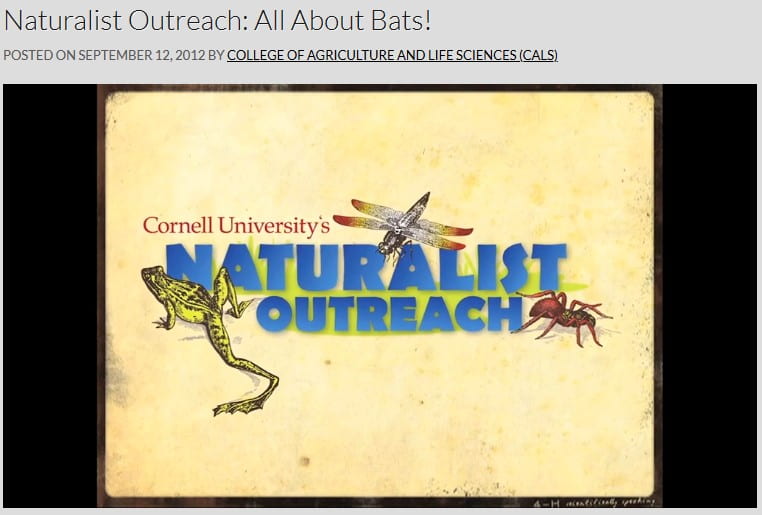The sun was set; the night came on apace, And falling dews bewet around the place; The bat takes airy rounds on leathern wings, And the hoarse owl his woeful dirges sings. – John Gay
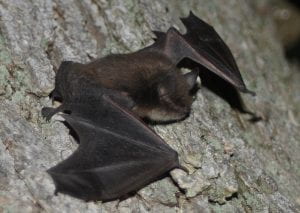
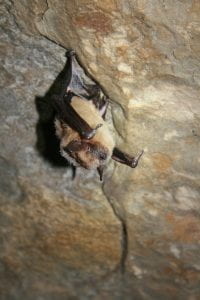
Bats are one of those creatures that instill fear in people. (Thanks, Hollywood.) But as all our New York bats eat insects, at a rate of around 700 insects per hour, they can play an important biocontrol role in our IPM programs.
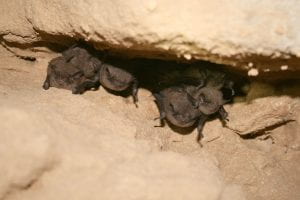
There are two types of bats in the Northeast. Some species are communal and typically overwinter in caves, mines, and sometimes, to our consternation, our buildings. They include the little brown bat, big brown bat, eastern long-eared bat, eastern pipistrelle, small-footed myotis, and the federally endangered Indiana bat.
(If you find bats lodging in your attic, it is best to call in the professionals. They’ll work with you at the right times of the year to close up crevices and holes that let bats in. Closing up entry holes in the summer could trap baby bats inside. For more information, visit What’s Bugging You – How to deal with bats.)

Bats in the second group live largely solitary lives, roost primarily in tree canopies and cavities, and migrate south for the winter. These include the red bat, hoary bat, and silver-haired bat.
According to the Cornell publication, Bats in the Forest and Beyond, “in a study of a colony of 150 brown bats in an agricultural area, researchers estimated that the colony consumed over 1.25 million insects in a year. This is not surprising, considering that a single bat may eat 3,000 insects on a given summer night. Bats roosting and foraging in New York forests consume forest and eastern tent moths, and a variety of other potential forest pests”.
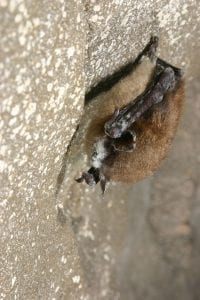
The legal status of bats varies from state to state. In New York, two species, the Indiana bat and the northern long-eared bat, are protected. However, the conservation of all bats is encouraged. This is particularly important since the populations of some bat species, especially the little brown bat, have been decimated by an introduced fungal disease, white-nose syndrome.
So what can we do to help? According to the Cornell Wildlife Health Center, “to minimize spread of the fungus [that causes white-nose syndrome], people should not handle bats, avoid entering caves and mines with bat colonies, and should decontaminate all equipment and clothing between caves and bat roosts”.
Leave or plant trees with deep furrowed bark such as shagbark hickory that provide roosing spots for bats. Allowing dead trees with peeling bark can also provide habitat. If you must take down these trees, avoid cutting from May to early August when bats are raising their young. We can also install bat boxes, which mimic areas bats would naturally roost.
Looking for something to do with the kids? Alyson Brokaw, a student involved with The Cornell University Naturalist Outreach Program, talks to students about her love of bats and developed a companion education guide.
